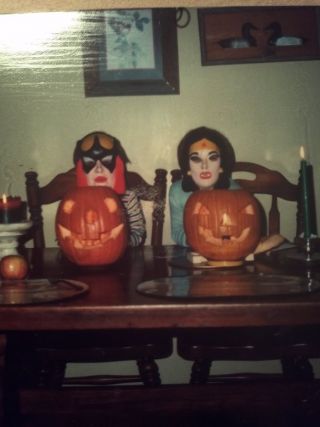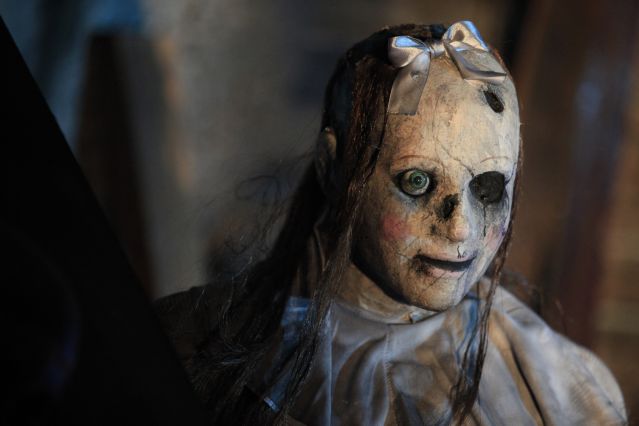
Relationships
Why We Love to Be Scared
The physical, psychological, and social reasons we crave thrills and chills
Posted October 7, 2015
As a chill enters the air and as everything that can be made pumpkin is made pumpkin, our attention turns to spider webs, jack-o-lanters, and the macabre. The scary season is upon us and before we know it, we long to walk down fog filled paths with dimly lit candles and dry rustling leaves. We decorate our houses, dress up ourselves, our kids, and our pets, and go out looking for the best-haunted house, corn maze, or scary movie. Even those with little to no taste for the startle of a haunted hayride savor the comforting yet undeniably spooky nostalgia triggered by the changing leaves and smell of spiced cider. Indeed, consumer spending has increased 55% since 2005, for a total of $6.9 billion in 2013. So why do we love it so much?

The answers are many.
To begin with, much like Thanksgiving, Halloween is a once a year “holiday” we experience with our friends and family, making it an intense social and emotional experience that bonds us to those we love. From a child’s first trip to a pumpkin patch with her parents, to her first trick-or-treating with friends, these moments stand out in our mind because of the strong emotions they illicit.

Super Heroes: My sister and I circa 1984
The combination of friends, thrills, chills and spooky things thrusts our body, namely the emotional processing centers in our brain (amygdala, insula, prefrontal cortex, hippocampus) into a perfect state for encoding layered and strong memories. We store intense emotional experiences with more detail and importance than non-emotional experiences, it’s our bodies way of making sure we remember what makes us feel good (and to seek it out more) and what makes us feel bad (and to stay away).
Usually when we’re scared it IS a bad thing, it’s our bodies well developed threat response system letting us know something is not quite right, and preparing us to run or fight. This sophisticated system triggers a chemical cascade meant to help us survive: adrenaline, endorphins, dopamine, serotonin, oxytocin among others flood our bodies and brains during (and for a while after) a scary situation. But this response shares a lot with other high arousal responses, like when we’re happy, excited, and surprised. The context is what is important when it comes to whether we put a positive or negative spin on the experience. Being scared lost in the woods alone with no help in sight—bad; being scared lost in a haunted house with your friends, with professionals no more than twenty feet away ready to whisk you out of danger—good!
Not everyone likes being scared though, even in a safe place. For some a racing heart, sweaty palms, and the grueling weight of anticipation is just too much to tolerate, let alone purposefully induce. But for others, and it seems those with particularly efficient dopamine and reward systems, being scared in a safe place is a source of enjoyment and makes them feel good. It can even serve as a confidence boost, reminding us that we can make it through a scary situation, we are strong.

My walk on the CN Tower
Then of course there is the enjoyment that comes from putting on a mask and pretending to be someone else, or in some cases one’s true self, for a night (not including those who use it as an opportunity to exploit, oppress, or harm others, that’s just cowardly and awful). Whether it is a very conscious and calculated decision to take a “moral holiday” (similar to Mardi Gras) and express the parts of the self kept suppressed the rest of the year, or to experiment with what it might feel like in a different skin, the ability to be something else, with little to no consequence, is all to appealing. And for many who choose to wear the mask of something that is “other” they are reminded of their own identity and reaffirm their own selfhood. Or perhaps finally decide that it is time to switch which is the mask, and which is the true self.
And then there is the candy. ALL THE CANDY. What other time of year is it acceptable to eat a bag of peanut butter cups? It is indulgence to the fullest degree. But also like Mardi Gras, in our indulgence we are reminded of the importance of restraint and moderation.
So there you have it, Halloween is loaded with intense emotional triggers: the nostalgia of Halloweens past, the excitement and exhilaration of dressing up in costume with friends, the thrill of anticipating when someone jumps out to go “BOO,” and of course the activation of our reward systems via the consumption of delicious candy. It is a perfect recipe for strong, positive emotional memories.

So go ahead, eat and drink all the pumpkin things, indulge in the candy and suspend all disblief as you walk into the fog, and recapture the joy of imagination and the pure exhiliaration that comes with a laugh followed by a scream.

